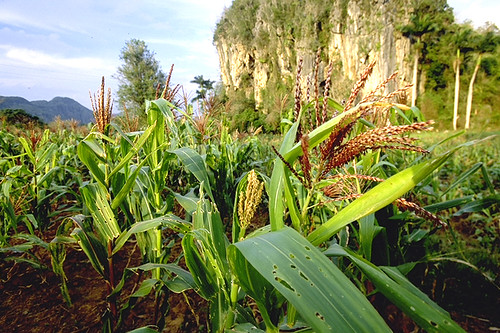
Since December 2014, when the United States and Cuba announced the intention to restore diplomatic ties for the first time in more than half a century, the U.S. has taken steps to ease restrictions on trade, remittances, and travel to Cuba. The actions have generated a wave of enthusiasm about the economic opportunities that a more normal relationship between the two countries could create.
A recent report by the Economic Research Service (ERS) considers potential impacts of more normal commercial ties between the two countries on bilateral agricultural trade.
There was a time – before the Cuban Revolution - when U.S.-Cuba trade was quite substantial. During 1956-58, Cuba was the ninth leading destination for U.S. agricultural exports and the second leading supplier of U.S. agricultural imports. U.S. agricultural exports to Cuba were dominated by rice, lard, pork, and wheat flour, and on the import side by cane sugar, molasses, tobacco, and coffee. But following the Cuban revolution, the U.S. imposed an extensive economic embargo on Cuba and completely suspended trade and other commercial relations with the Cuba.
In 2000, the U.S. embargo underwent a major modification under the Trade Sanctions Reform and Export Enhancement Act (TSRA). The Act authorized sales of certain food products and medical supplies to a number of countries—including Cuba. As a result, the U.S. quickly regained its position as one of Cuba’s leading suppliers of agricultural products. During 2012-14, U.S. agricultural exports to Cuba averaged about $365 million a year -- mainly chicken meat, corn, and soybean meal. But the TSRA did not provide for resumption of U.S. imports from Cuba, which would be a key to restoring normal economic relations.
According to the ERS report, a more normal trade relationship would lead to an increase in U.S. agricultural exports to Cuba through several channels. First, U.S. exporters would be allowed to extend credit to their Cuban buyers, enhancing U.S. competiveness. Second, the United States would export a broader range of agricultural products – products currently supplied by other countries. Third, to the extent that relaxation of economic restrictions on Cuba spurs economic growth there, demand for U.S. agricultural products is likely to grow, including for higher-value commodities like meat and dairy products – and for commodities traded during the 2000s but not recently, such as dry milk, wheat, rice, and dried beans.
Over the long term, fostering growth in U.S.-Cuba agricultural trade hinges on building a two-way relationship that provides opportunities for trade and investment. It also hinges on whether the Cuban Government pursues more open trade and investment policies to benefit from those opportunities.
See also the feature on Cuba in ERS’s magazine, Amber Waves.
